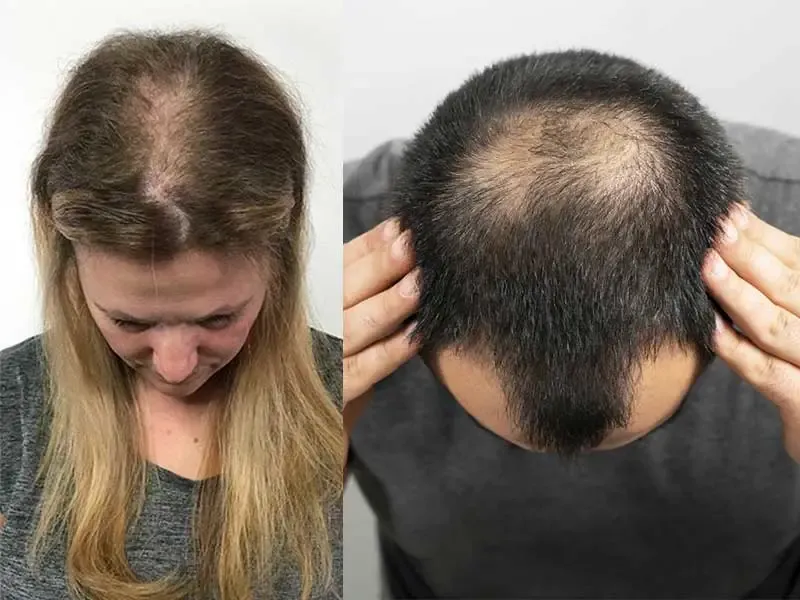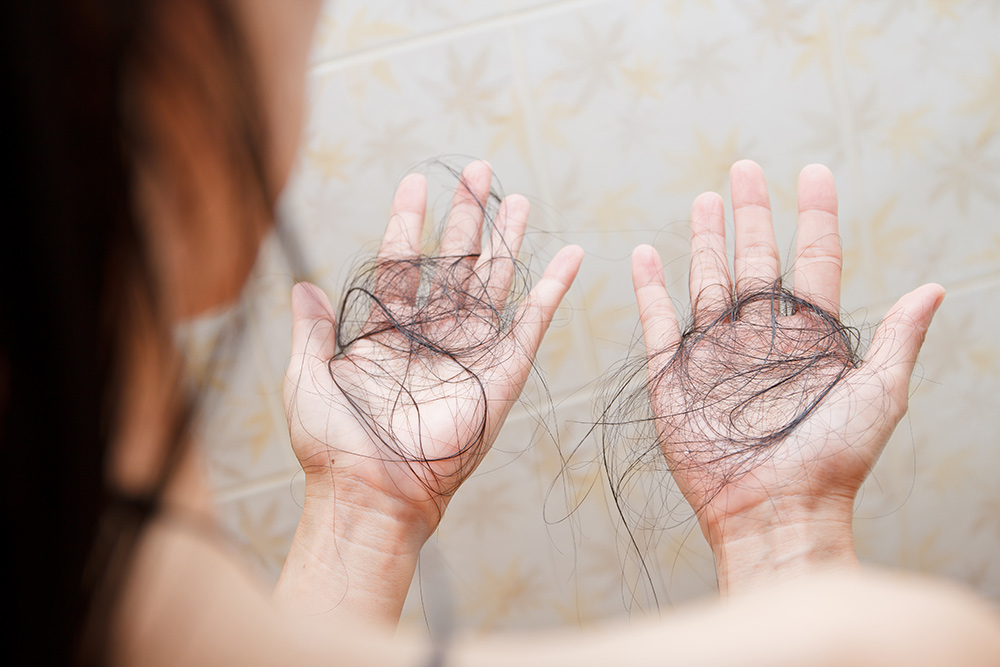Hair loss, also known as alopecia, refers to the partial or complete loss of hair from areas of the body where it normally grows, most commonly the scalp. It can occur gradually or suddenly and may be temporary or permanent. Hair loss can result from a variety of causes, including genetics, hormonal changes, medical conditions, medications, stress, and poor nutrition. The most common form is androgenetic alopecia, also called male-pattern or female-pattern baldness, which is hereditary and related to hormones. Other types include alopecia areata, an autoimmune condition that causes patchy hair loss, and telogen effluvium, which results from physical or emotional stress. Treatments for hair loss vary depending on the cause and may include medications like minoxidil or finasteride, lifestyle changes, or surgical procedures like hair transplants. For some, cosmetic options such as wigs or hairpieces provide a suitable solution. Consulting a healthcare professional is important for identifying the cause and exploring appropriate treatment options.

Common Types of Hair Loss:
- Androgenetic Alopecia (Pattern Baldness):
- Most common type.
- Affects both men and women (male-pattern and female-pattern baldness).
- Typically hereditary and related to hormones.
- Telogen Effluvium:
- Temporary shedding caused by stress, illness, childbirth, surgery, or medications.
- Hair shifts prematurely into the resting (telogen) phase.
- Alopecia Areata:
- Autoimmune condition where the immune system attacks hair follicles.
- Causes sudden, patchy hair loss.
- Traction Alopecia:
- Caused by pulling on the hair from tight hairstyles (e.g., braids, ponytails).
- Cicatricial (Scarring) Alopecia:
- A group of rare disorders that destroy hair follicles and cause permanent hair loss with scarring.
- Anagen Effluvium:
- Rapid hair loss caused by chemotherapy or radiation therapy.
Causes of Hair Loss:
Hair loss can occur due to a wide range of causes, both temporary and permanent. One of the most common causes is genetics, particularly in the form of androgenetic alopecia, which is hereditary and often referred to as male or female pattern baldness. Hormonal changes, such as those experienced during pregnancy, menopause, or due to thyroid disorders, can also trigger hair loss. Certain medical conditions, including autoimmune diseases like alopecia areata, scalp infections, or chronic illnesses such as lupus, can contribute as well. Medications used for cancer, depression, heart problems, and high blood pressure may cause hair loss as a side effect. Physical or emotional stress, along with poor nutrition—especially deficiencies in iron, protein, or vitamins—can lead to temporary hair shedding. Additionally, damaging hair care practices, such as frequent dyeing, heat styling, or wearing tight hairstyles, may result in hair loss over time. Aging naturally leads to thinner hair as well. Identifying the specific cause is important for choosing the right treatment or management strategy.
- Genetics
- Hormonal changes (e.g., pregnancy, menopause, thyroid issues)
- Medical conditions (e.g., lupus, scalp infections)
- Medications (e.g., chemotherapy, antidepressants)
- Nutritional deficiencies (e.g., iron, protein, vitamin D)
- Stress or trauma
- Poor hair care practices

Hair loss solutions :
Hair loss solutions for both men and women vary depending on the cause, severity, and personal preference. For genetic hair loss, which affects both sexes (male and female pattern baldness), treatments like minoxidil are widely used and approved for both men and women to slow hair loss and stimulate regrowth. Finasteride, an oral medication, is commonly prescribed for men but is not typically recommended for women due to potential hormonal side effects. For women experiencing hair loss due to hormonal imbalances, treatments may include hormone therapy or managing conditions like PCOS or thyroid disorders. Both men and women can benefit from improving their diet, reducing stress, and taking supplements if they are deficient in key nutrients like iron, vitamin D, or biotin. In more advanced cases, hair transplant surgery is a viable option for both genders, as is low-level laser therapy, which may help stimulate hair follicles. Cosmetic options such as wigs, hair toppers, and volumizing products also offer immediate confidence-boosting solutions. Consulting with a dermatologist or hair specialist is the best way for both men and women to find the right approach based on their specific needs.
Treatment Options:
- Medications: Minoxidil (Rogaine), Finasteride (Propecia)
- Hair transplant surgery
- Laser therapy
- Lifestyle/diet changes
- Wigs or hairpieces
- Addressing underlying conditions
